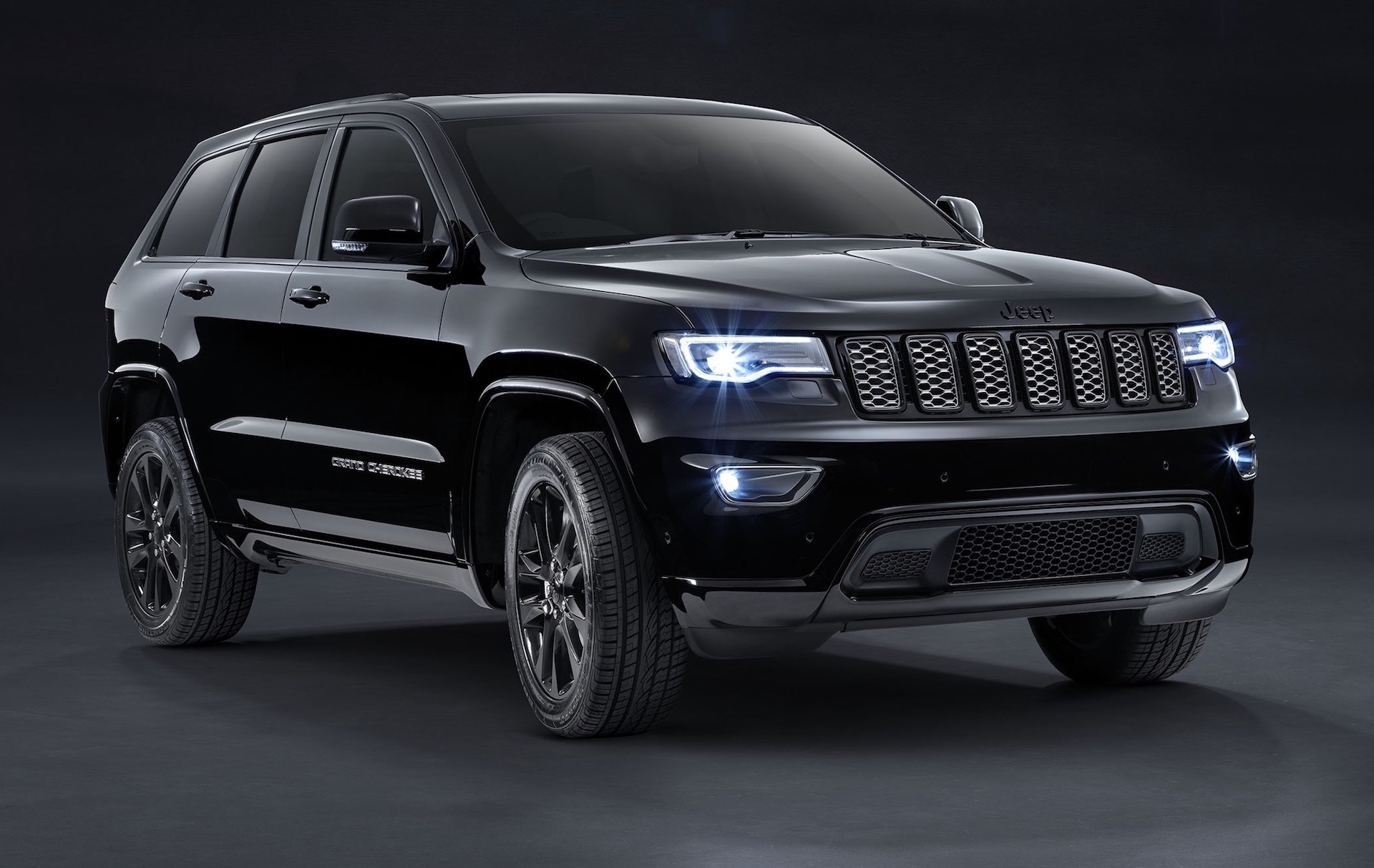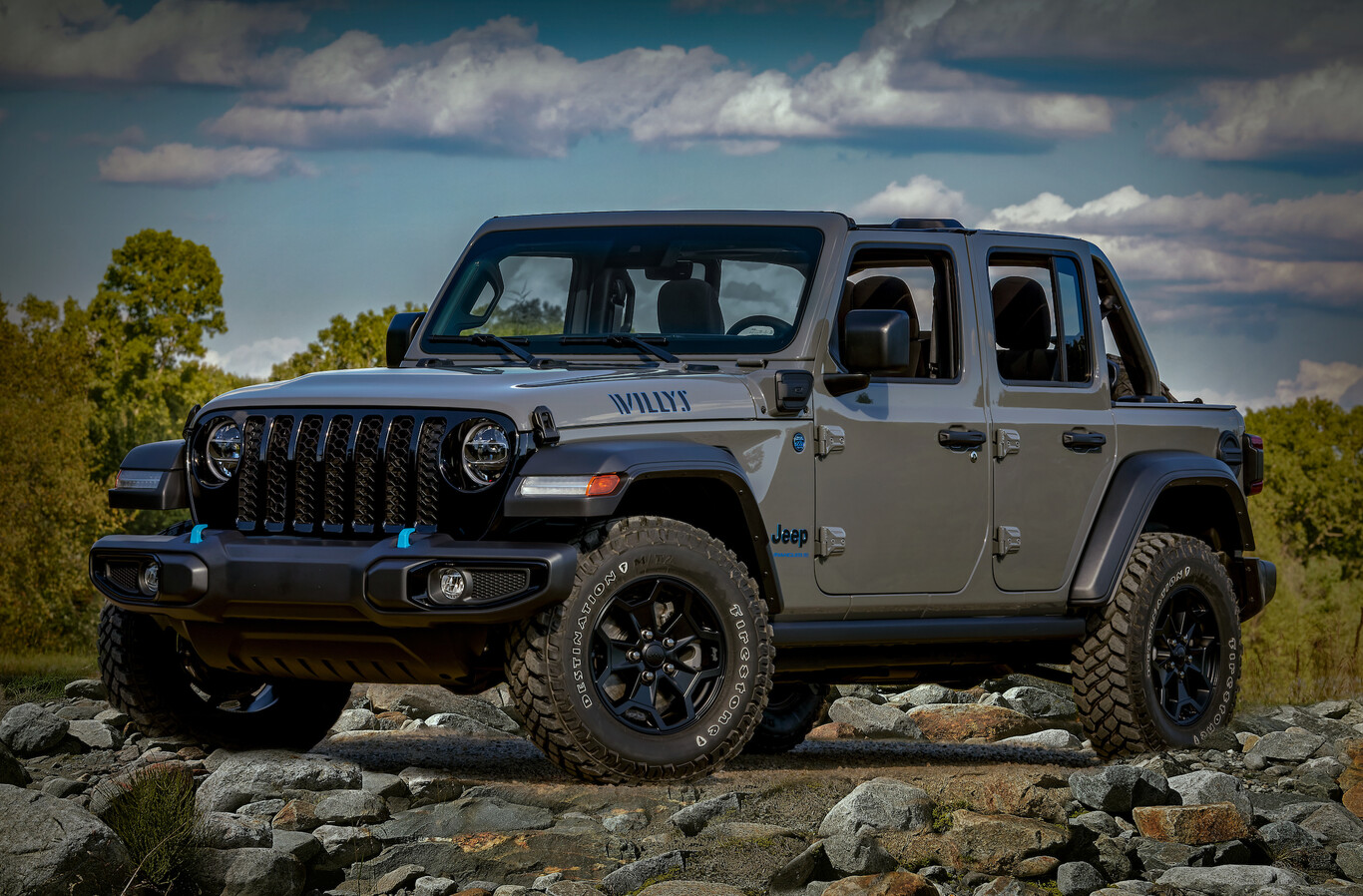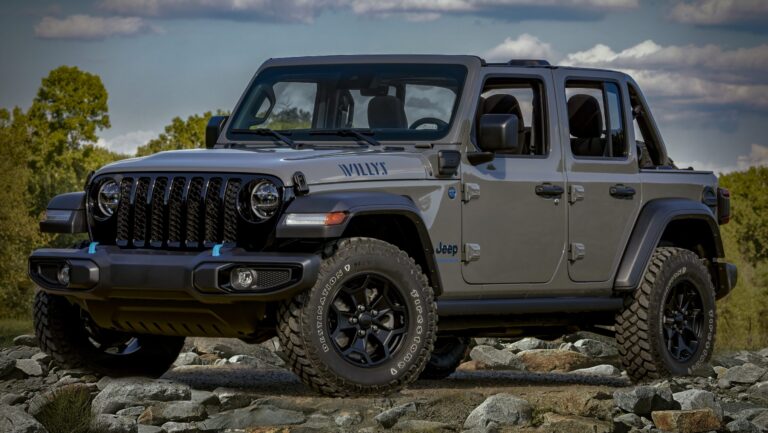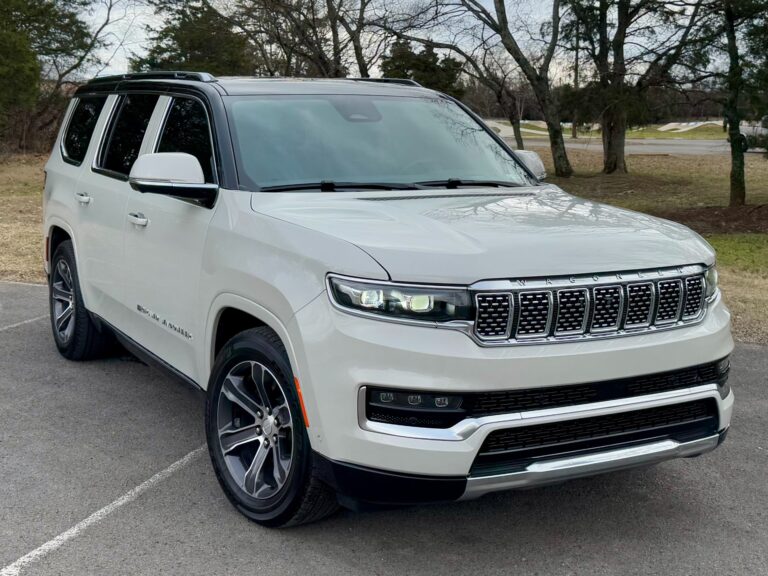Jeep JK Fenders For Sale: Your Ultimate Guide to Upgrading Your Wrangler’s Stance and Capability
Jeep JK Fenders For Sale: Your Ultimate Guide to Upgrading Your Wrangler’s Stance and Capability jeeps.truckstrend.com
The Jeep Wrangler JK (2007-2018) is an icon of off-road adventure, known for its rugged capability and distinctive looks. While factory-equipped, many JK owners quickly discover the limitations of their stock components, especially when it comes to tire size and trail performance. Among the most popular and impactful upgrades are aftermarket fenders. Far more than just a cosmetic tweak, new Jeep JK fenders for sale offer a significant boost in clearance, protection, and aggressive styling, transforming your Wrangler from a capable SUV into an off-road beast.
This comprehensive guide will delve into everything you need to know about purchasing and installing aftermarket fenders for your Jeep JK. We’ll explore the various types available, their benefits, critical considerations, and provide practical advice to help you make the best decision for your rig and your adventures.
Jeep JK Fenders For Sale: Your Ultimate Guide to Upgrading Your Wrangler’s Stance and Capability
Understanding Jeep JK Fenders: More Than Just a Pretty Face
At their core, fenders are the body panels that arch over your vehicle’s wheels, serving as a barrier to prevent mud, rocks, and other debris from being flung up by the tires and damaging the vehicle’s body or injuring pedestrians. For Jeep JKs, particularly those venturing off-road, stock fenders often become a bottleneck. They limit the size of tires you can run without rubbing, restrict wheel articulation, and are often made from relatively thin plastic that can be easily damaged by trail obstacles.
Aftermarket Jeep JK fenders for sale address these limitations head-on. They are designed to provide increased clearance for larger tires, offer superior durability, and radically alter the aesthetic of your Wrangler. Whether you’re looking to run 37-inch tires, conquer challenging rock crawling trails, or simply give your JK a more aggressive stance, upgrading your fenders is often a crucial step.
Types of Aftermarket JK Fenders: Finding Your Perfect Fit
The market for Jeep JK fenders is vast, offering a wide array of designs, materials, and functionalities. Understanding the different types is key to selecting the right set for your needs:
- Flat Fenders: These are perhaps the most popular choice for serious off-roaders. Flat fenders are designed to sit high and flat, significantly increasing the clearance above the tires. This allows for much larger tire sizes and greater suspension articulation without rubbing. They provide an aggressive, minimalist look, often requiring some cutting of the factory body for installation. They are typically made from steel or aluminum for maximum durability.
- High-Clearance Fenders: Similar in purpose to flat fenders, high-clearance fenders also aim to maximize tire clearance. They might retain a slightly more rounded or factory-like profile than true flat fenders but still offer substantial gains over stock. These are a great compromise for those who want increased clearance without the ultra-aggressive look of some flat designs. Available in steel, aluminum, or durable plastics.
- Tube Fenders: Known for their heavy-duty construction, tube fenders are typically fabricated from steel tubing and plate. They often integrate directly with the inner fender well, providing immense strength and protection. Some tube fenders come with integrated LED lighting for turn signals or daytime running lights. They offer excellent clearance and a rugged, industrial look, making them ideal for extreme rock crawling.
- OE-Style/Wider Flares: If your primary goal is to accommodate slightly wider tires or comply with tire coverage laws in your state without significantly altering the aesthetic or requiring major body modifications, OE-style or wider flares are a good choice. These mimic the shape of the factory fenders but extend outwards further, providing more tire coverage. They are usually made from durable ABS plastic or TPO and are generally a straightforward bolt-on installation.
- Inner Fender Liners: While not "fenders" in the traditional sense, aftermarket inner fender liners are often purchased alongside outer fenders. They protect the engine bay, wiring, and other components from mud, rocks, and debris. Many aftermarket outer fenders are designed to be paired with specific inner fender liners, which can also contribute to a cleaner, more finished look in the wheel well. They come in steel, aluminum, or plastic.
![]()
Material Matters:

- Steel: The strongest and most durable option, ideal for heavy off-roading where impacts are likely. However, steel is heavy and susceptible to rust if not properly coated or maintained.
- Aluminum: Lighter than steel, making it a good choice for those concerned about vehicle weight (which impacts fuel economy and suspension performance). Aluminum is naturally corrosion-resistant but generally more expensive than steel and can be more prone to bending or denting upon severe impact compared to thick steel.
- ABS Plastic/TPO: The most affordable and lightest option, commonly used for OE-style and some high-clearance flares. While durable for everyday use and light trails, they offer less impact resistance than metal options and can crack or shatter under extreme abuse.

Benefits of Upgrading Your JK Fenders
Investing in aftermarket Jeep JK fenders for sale offers a multitude of advantages:
- Increased Tire Clearance: This is the primary driver for most upgrades. Larger fenders allow you to run bigger tires (e.g., 35s, 37s, or even 40s) with appropriate lift kits, significantly enhancing off-road traction and capability.
- Enhanced Off-Road Performance: With greater tire clearance, your Jeep can articulate more freely without the tires rubbing against the fenders. This improves wheel travel and keeps your tires on the ground over uneven terrain, boosting traction and stability.
- Superior Body Protection: Aftermarket fenders, especially those made from steel or aluminum, provide robust protection against trail hazards like rocks, branches, and other obstacles that can damage your factory sheet metal.
- Custom Aesthetic Appeal: Upgraded fenders dramatically change the look of your JK, giving it a more aggressive, rugged, or custom appearance that stands out from stock.
- Durability and Longevity: Designed for the rigors of off-roading, aftermarket fenders are generally far more durable than the factory plastic flares, offering a long-lasting upgrade.
- Legal Compliance: In many regions, local laws require your tires to be fully covered by fenders to prevent debris from being thrown onto the road. Wider aftermarket flares ensure you meet these regulations, especially if you’ve installed wider tires or wheels with a more aggressive offset.
Key Considerations Before Buying JK Fenders
Before you click "add to cart," take a moment to consider these crucial factors:
- Your Driving Style and Use Case: Are you a daily driver who occasionally hits light trails, or is your JK a dedicated rock crawler? Your primary use will dictate the necessary level of clearance and durability.
- Tire Size and Lift Kit: The size of your current or planned tires and your suspension lift are paramount. Ensure the fenders you choose provide adequate clearance for your setup.
- Material Choice: As discussed, weigh the pros and cons of steel, aluminum, and plastic based on your budget, desired strength, and weight considerations.
- Finish: Fenders are available in raw steel/aluminum (requiring painting or powder coating), textured black powder coat, or paintable plastic. Consider what finish best suits your build and whether you want to incur additional painting costs.
- Installation Difficulty: Some fenders are straightforward bolt-on affairs, while others require cutting, drilling, or even welding to your JK’s body. Be honest about your DIY skills or factor in professional installation costs.
- Integrated Features: Do you want fenders with integrated LED turn signals, side markers, or rock lights? These can be convenient but may add to the cost and wiring complexity.
- Inner Fender Compatibility: Check if the outer fenders you choose are compatible with aftermarket inner fender liners, or if they include them.
- Budget: Prices vary significantly depending on material, brand, design, and features. Set a realistic budget and stick to it.
- Local Regulations: Double-check your state or local laws regarding tire coverage to ensure your new fenders meet legal requirements.
Installation Guide: Swapping Out Your JK Fenders (General Steps)
While specific steps vary by fender type and brand, here’s a general overview of what to expect during installation:
- Preparation: Gather all necessary tools (wrenches, sockets, screwdrivers, drill, body saw/grinder if cutting is required, painter’s tape, measuring tape), safety gear (gloves, eye protection), and a friend to help. Clean the work area.
- Remove Stock Fenders: Carefully remove the factory fender flares and inner fender liners. This typically involves removing plastic clips, bolts along the wheel well, and potentially some bolts securing them to the body. Disconnect any factory lighting wires.
- Body Modification (If Required): For flat or high-clearance fenders, you’ll likely need to trim or cut a portion of the JK’s sheet metal. Follow the manufacturer’s templates precisely. Measure multiple times, mark clearly, and cut slowly. Protect painted surfaces with painter’s tape.
- Install New Fenders: Position the new fenders onto the body. Secure them using the provided hardware. This might involve bolting into existing holes or drilling new ones. Ensure proper alignment and fitment.
- Wiring (For Integrated Lights): If your new fenders have integrated lights, connect them to your JK’s wiring harness. This may require splicing wires or using adapter harnesses. Test all lights before final assembly.
- Install Inner Fender Liners (If Applicable): If you purchased new inner fender liners, install them now, securing them to the new outer fenders and the vehicle’s frame/body.
- Final Checks: Double-check all bolts for tightness. Ensure no wires are pinched. Test for tire clearance by cycling the suspension if possible.
Tips for a Smooth Installation:
- Read Instructions Thoroughly: Every kit is different; follow the manufacturer’s instructions precisely.
- Patience is Key: Don’t rush the process, especially if cutting is involved.
- Protect Your Paint: Use painter’s tape around areas where tools might slip or where cutting is occurring.
- Torque Specs: If provided, use a torque wrench to tighten bolts to the correct specifications.
- Professional Help: If you’re uncomfortable with body modification or complex wiring, consider having a reputable off-road shop perform the installation.
Where to Find Jeep JK Fenders For Sale
You have numerous options when looking for Jeep JK fenders for sale:
- Online Retailers: Large online retailers specializing in Jeep parts (e.g., Quadratec, ExtremeTerrain, Northridge4x4, Morris 4×4 Center) offer a vast selection from various brands, often with competitive pricing and detailed product descriptions.
- Manufacturer Websites: Many popular aftermarket brands (e.g., Smittybilt, Poison Spyder, Bushwacker, MetalCloak, Fab Fours, Artec Industries) sell directly from their websites, often showcasing their full product line.
- Local Off-Road Shops: Visiting a local off-road specialty shop allows you to see products in person, get expert advice, and potentially arrange for professional installation.
- Used Marketplaces: Websites like eBay, Facebook Marketplace, and dedicated Jeep forums can be good sources for used fenders, potentially saving you money, but inspect them thoroughly for damage before purchasing.
Price Table: Jeep JK Fenders For Sale (Approximate Ranges)
Please note that prices are highly variable based on brand, material, design complexity, features (like integrated lights), and retailer. This table provides general approximate ranges as of the time of writing.
| Fender Type | Material Options | Price Range (USD – Per Set: Front & Rear) | Key Features / Notes |
|---|---|---|---|
| OE-Style/Wider Flares | ABS Plastic, TPO | $200 – $600 | Wider than stock, good for wider tires, usually bolt-on, easy install. |
| Flat Fenders | Steel (raw/powder-coated), Aluminum | $400 – $1200 | Max clearance, aggressive look, often requires body cutting. Heavy-duty. |
| High-Clearance Fenders | Steel (raw/powder-coated), Aluminum | $500 – $1500 | Significant clearance, may retain some stock lines, often requires trimming. |
| Tube Fenders | Steel (raw/powder-coated), Aluminum | $800 – $2000+ | Heavy-duty, integrated structure, often with lights. Most protective. |
| Inner Fender Liners (Set) | Aluminum, Steel, ABS Plastic | $200 – $600 | Sold separately, protects engine bay from debris, completes the look. |
| Complete Fender Kits | Steel, Aluminum | $1000 – $3000+ | Full sets including front & rear fenders, sometimes with inner liners and lights. |
Disclaimer: These prices are estimates and can fluctuate significantly. Always check current pricing from reputable retailers.
Frequently Asked Questions (FAQ)
Q: Do I need new fenders if I lift my JK?
A: Not necessarily, but if you’re installing larger tires (e.g., 35 inches or more), aftermarket fenders are highly recommended to prevent tire rubbing, especially during suspension articulation off-road. They also enhance the aesthetic appeal with larger tires.
Q: What’s the main difference between flat and high-clearance fenders?
A: Flat fenders offer the absolute maximum tire clearance by sitting almost flush with the top of the tire, giving a very aggressive look and typically requiring more body modification. High-clearance fenders also provide significant clearance but might retain a slightly more curved or factory-like profile, sometimes requiring less aggressive cutting.
Q: Are steel or aluminum fenders better for my JK?
A: It depends on your priorities. Steel is heavier, typically stronger for impacts, and often more affordable. Aluminum is lighter (better for fuel economy and overall vehicle weight), corrosion-resistant, but generally more expensive and can dent more easily than thick steel. For extreme rock crawling, many prefer steel.
Q: Do I need to cut my JK’s body to install aftermarket fenders?
A: For many flat or high-clearance fenders, yes, some trimming or cutting of the factory sheet metal is required. OE-style wider flares are typically bolt-on and do not require cutting. Always check the specific product’s installation instructions.
Q: Do aftermarket fenders usually come with inner fenders?
A: Most aftermarket outer fenders do not include inner fender liners as part of the standard kit. Inner fender liners are often sold separately but are a highly recommended add-on for protection and a finished look.
Q: How long does it take to install JK fenders?
A: Installation time varies greatly. A simple bolt-on OE-style flare kit might take 2-4 hours. A full set of steel flat or tube fenders that require cutting and drilling could take 8+ hours, especially for a first-timer. Professional installation will also vary by shop.
Q: Will new fenders affect my JK’s ride quality?
A: The fenders themselves do not directly affect ride quality. However, the larger tires and suspension lift that often accompany fender upgrades will impact ride quality.
Q: What about legal requirements for tire coverage?
A: Many states and countries have laws requiring tires to be fully covered by fenders to prevent debris from being thrown onto the road. If you’re installing wider tires or wheels with a negative offset, ensure your chosen aftermarket fenders provide adequate coverage to comply with local regulations.
Conclusion
Upgrading your Jeep JK fenders is one of the most transformative modifications you can make to your Wrangler. Beyond the undeniable aesthetic appeal, aftermarket fenders unlock your JK’s full potential by providing essential tire clearance, robust protection, and enhanced off-road capability. By carefully considering your needs, understanding the different types available, and planning your installation, you can confidently navigate the market for Jeep JK fenders for sale and equip your rig for whatever adventures lie ahead. It’s an investment that pays dividends in performance, durability, and the sheer joy of a custom-built machine ready to conquer any terrain.





